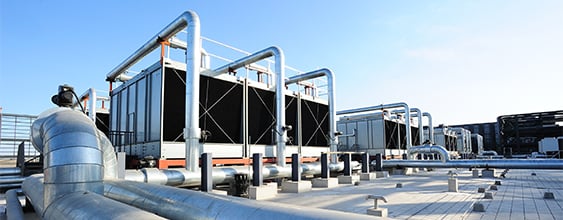In recent years, we have seen a shift in how businesses perceive sustainability as it has become increasingly mainstream. As organizations have become more adept at managing their own environmental impact, they are beginning to ask their suppliers to do the same.
Supply chains are often made up of hundreds, if not thousands, of suppliers who provide a variety of products and services. Developing targets to manage GHG emissions generated upstream from direct operations can seem daunting, given the difficulties associated with obtaining quality data and the potentially thousands of data sources. In the past, we discussed how best to develop scope 3 supply chain targets, but we’d like to step back and discuss why organizations might set supply chain sustainability targets.
Risk Mitigation and Resilience
Supply chain disruption is a critical issue. In 2017 and 2018, the United States was hit with four major hurricanes and devastating wildfires across California, which disrupted the transportation infrastructure on which organizations rely to receive shipments of raw materials, components, and other goods.
According to the 2019 Global Risks Report published by the World Economic Forum, extreme weather events, failure of climate change mitigation and adaptation, and natural disasters are in the top five most likely global risks, as well as the top five risks in terms of potential impact. The Business Continuity Institute’s Supply Chain Resilience Report 2018 stated that 41% of the 376 organizations polled experienced supply chain disruption due to adverse weather in the prior 12 months. As climate change continues to increase the frequency and severity of extreme weather events, organizations will face increasing risk within their supply chains. Collaborating with suppliers on business continuity planning and climate mitigation efforts can improve resiliency in the supply chain and reduce the potential impacts of disruptions.
Additionally, climate science is changing the regulatory and political landscape as more jurisdictions implement GHG control mechanisms, such as cap-and-trade, carbon taxes, mandatory disclosure and other carbon management requirements. Companies that have proactively assessed their carbon risks and understand their emissions mitigation opportunities will be better prepared for these voluntary schemes and mandatory requirements. By setting targets to reduce supply chain GHG emissions, organizations can thereby reduce regulatory risk in their supply chain.
Reputation
More organizations are realizing the reputational risk associated with the actions of their suppliers in response to climate change. One of the latest risks stems from deforestation caused by commodities including palm oil, timber, cattle and soy. The public’s growing concern over the impacts of their purchasing decisions on deforestation is causing companies to scramble to reduce these impacts from their supply chains. Companies that do not adequately manage climate-related risk in their supply chains could face reputational risk from climate-concerned stakeholders.
Innovation
Organizations are finding ways to delink economic growth from carbon emissions, ensuring the possibility of future growth regardless of emissions constraints. Asking your suppliers to reduce GHG emissions may lead to the development of new, low-carbon processes, technologies, services and products. Organizations that have already started innovating raise the bar for others to follow suit.
Profitability
As new technologies are developed to address the low carbon economy, organizations may capture new revenue streams. Asking your suppliers to reduce GHG emissions can encourage operational efficiency and reductions in material inputs and energy consumption, all of which reduce cost. Additionally, evidence is mounting that sustainable organizations deliver better returns for investors and increased longevity.
Learn More About WSP
Representatives from WSP will be attending the Sustainable Purchasing Leadership Council Summit in Portland, Oregon, May 20-22. Josh Nothwang and Kealy Herman will discuss trends and best practices for setting ambitious supply chain sustainability goals during the Innovation Accelerator session, from 1:45-3:20 p.m. on Tuesday, May 21
For more information about our supply chain sustainability services, visit our Sustainability, Energy and Climate Change website or download our supply chain sustainability factsheet.















